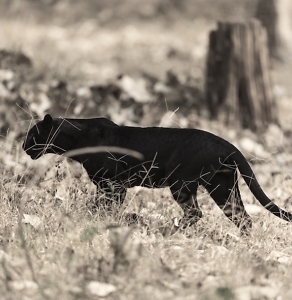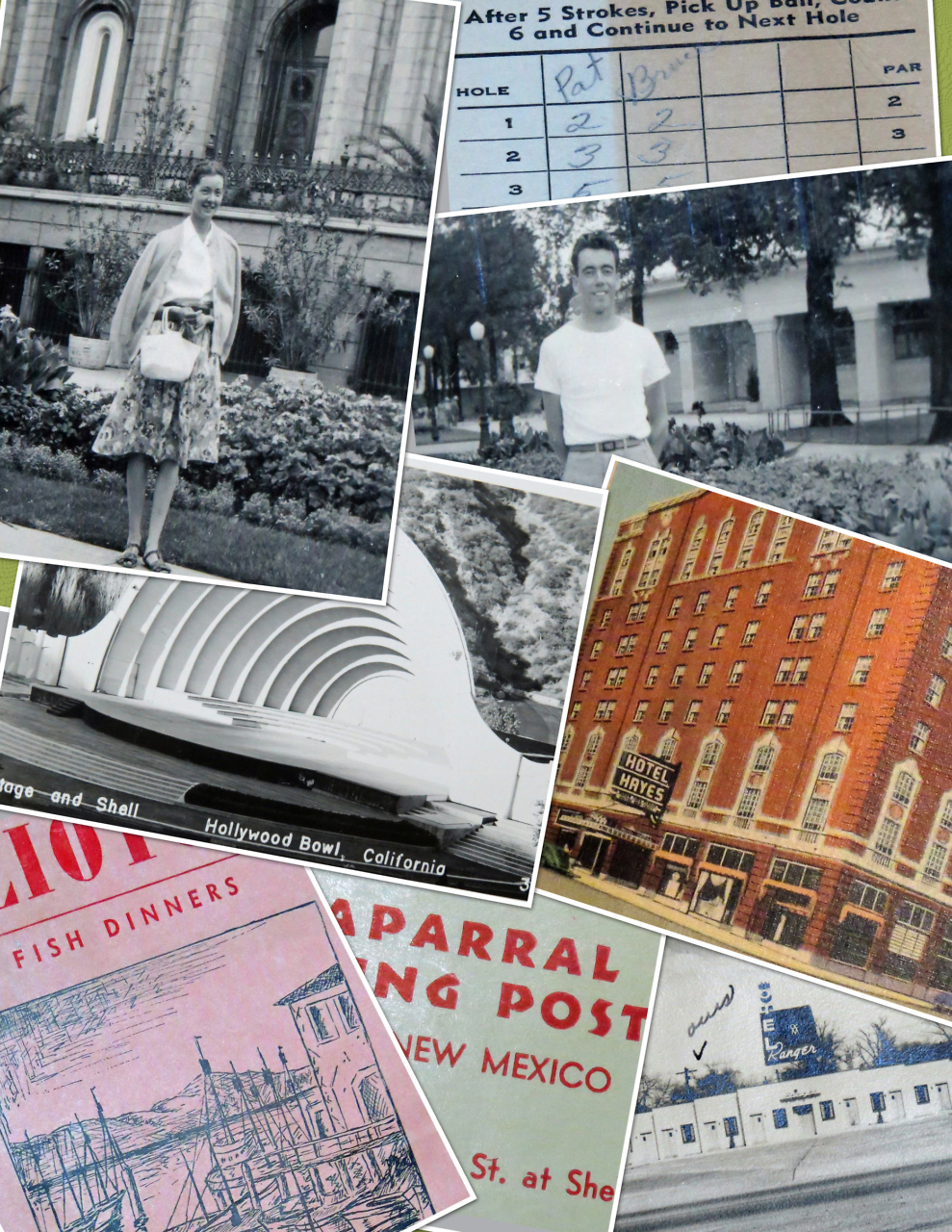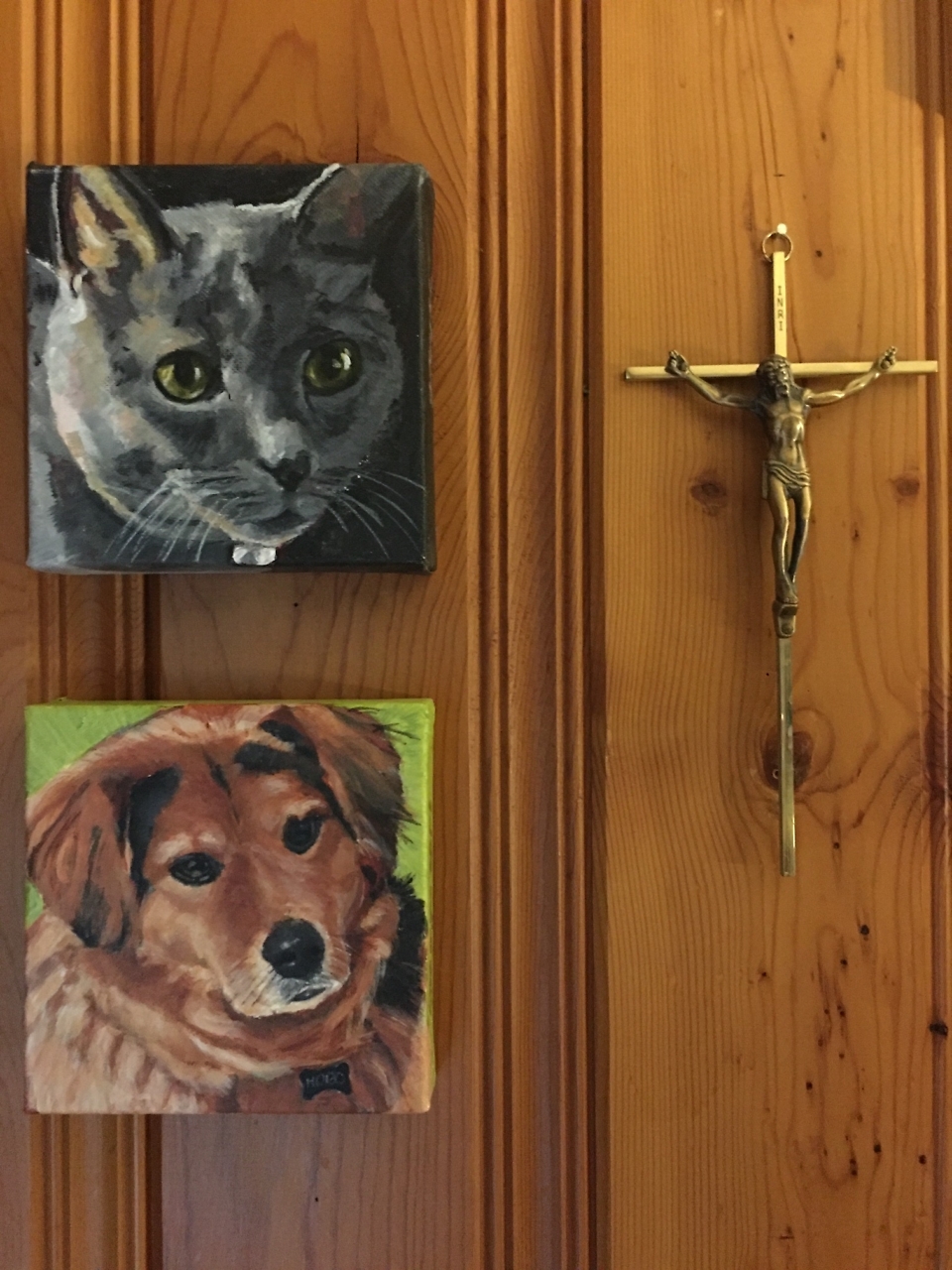The Attack
I knew all the neighborhood cats, and this wasn’t one of them
At age nine, I saw a panther outside my home in Knox County, Tennessee. We lived in the Bluegrass Community long before it became a hotspot of suburban Knoxville. Our rural neighborhood had two tiny grocery stores, several churches, and a school that housed eight grades. With one class of students per grade, it was the perfect setup for a shy child such as myself. The school also functioned as a community center, and its basketball games, student plays, and fall festival were major neighborhood events. So were the Community Club meetings, where locals discussed issues of interest.

There weren’t many newcomers in Bluegrass, but a few families like mine had moved near Ft. Loudoun Lake. In my case, this sounds grander than what it was. Dad had gambled on his future by buying waterfront property just a year out of law school. Our home sat well up-ridge from the lake on a dead-end road. A ‘50s vacation house, its upstairs featured knotty pine walls, floors, and ceilings, while cinder- block walls and tile floors prevailed below. There was no central heat or air conditioning. My brother Doug and I slept downstairs where the only air flow came from our cranked-open windows. Nights in that house explain my love of the jarfly’s summer music — and my hatred of sleeping in the heat.
Dad, who was born in the midst of the Depression, had no qualms about having his older children work. From the time that Doug was his early teens, with me three years younger, we helped to clear brush from the several acres purchased with the house. My job was to clear the fragrant but invasive honeysuckle vines that choked our young trees. After Dad cut the vine from its roots, I painstakingly unwrapped its tendrils from around the sapling’s trunk, then pulled the vine’s foliage out of the tree’s branches. This took effort because the honeysuckle was often intertwined with grapevines, resulting in a tangled mess several feet above my head. Doug got to tend the fire where we burned the discarded brush. He also dug postholes for fencing, an exhausting task. Dad gave lots of directions and commandeered the axe and chainsaw. We labored on the weekends whenever he had time, and during the warm months we were rewarded by afternoons spent swimming, boating, and skiing. It was an odd childhood, part offspring of a professional and part day laborer.
One late spring day when I was in third grade, the three of us were trekking up the bluff from the lake to the house. Being the youngest and carrying a light load, I was in front, but I’ve never hiked that ridge without pausing to catch my breath. This time when I stopped, I was near our driveway where the paved road was replaced by a mixture of dirt and gravel. Wide enough for a car, this lane had two deep ruts, created by tires and erosion, which paralleled a center, weed-filled, mound. It all ended a few hundred feet downhill from our driveway after flattening out and merging into a turnaround.
While resting, I noticed a black cat lying across that road, near the end where it was smoothest. This got my attention because I knew all the neighborhood cats, and this wasn’t one of them. Then I realized that the animal stretched completely across the road, its length the width of an automobile. The feline’s coat gleamed glossy black as it lazed in the sun. There had been much-discussed reports of a panther sighting across Bluegrass, but I had considered them too extraordinary to believe. Now I knew they were true.
I jumped and screeched with joy, pointing down the dirt road. “The panther, the panther,” I gasped.
Doug, who was 10 yards behind me, said he wasn’t going to fall for my trick.
I kept yelling and eventually blurted, “Fine, you’ll miss it.” My gaze never left the cat.
At last my brother hurried up the ridge and paused beside me. I heard him gasp. He turned to Dad and said, “Yes,” then told me, “Shut up, you’ll scare it off.”
I quieted, but the panther was already ambling to its feet. Its yellow eyes gave me one of those irritated looks that cats have when disturbed as it glided lazily into the woods.
***
I was a star at school that Monday morning, informing my classmates, teachers, and even the bus driver about my experience. A normally quiet kid, I felt special when talking about the cat. Briefly, I became Bluegrass’ black panther expert, joyfully describing its sleek power. Everyone speculated as to where it had come from. Some said it wasn’t a native species and must have escaped from a private owner. Others, myself included, swore it traveled to the valley from the Smoky Mountains where it and its kind had hidden from humans.
We all kept watch for another feline sighting. Finally, later that week during recess, one of the boys in my class said that his father had seen the cat. Mitchell had failed a grade or two and was older than the other kids in our small class. He lived not far from the school, off the main road where his father purportedly brewed and sold hootch. My dad was a member of the Community Club, but I had never seen Mitchell’s father at school events, which made him a shady character in my eyes. As my classmates and I gathered around Mitchell on the playground, the boy announced his real news: His father had shot the panther. Heavy air clogged in my throat.
An unfamiliar rage surged within me that day, one I couldn’t control. I screamed and flung myself against Mitchell, beating my fists on his chest. I remember that he felt larger and more solid than I expected, and I vaguely realized that if he decided to fight back, I was in real trouble. Instead, he stood with his arms to his sides, stunned. Then rough hands grabbed my shoulders, pulling me away from my target.
“His father… killed the panther,” I screeched, only to be spoken to with more anger than a teacher had ever directed at me.
“Behave yourself,” she insisted, with a shake.
I stared at the ground, the centerpiece of a gathering crowd. Determined to convey my distress, I stuttered, “But…the cat was….” Tears and snot covered my face. Finally a new word came to me: “Mag-ni-fi-cant,” I blubbered.
Above me, I heard a second teacher announce, “I probably would have hit him too.”
Afterward, I was unrepentant through my inevitable punishment — which I don’t even remember — several lectures on violence not solving problems, and my forced apology to Mitchell. Anger and grief numbed me as I mourned the powerful animal I had considered my own.
A few days later, a classmate informed me that Mitchell had dropped out of school, and I was to blame. When I asked my teacher about it, she said it was true and asked if I could apologize again. She then talked with someone who consulted with Mitchell’s mother, the problem-solving method used by rural communities at the time. In a few days, I found myself alone in a classroom with the older boy, trying to give a heartfelt apology for my actions while knowing I would choose to take them again.
I said that I was sorry, that I knew he didn’t shoot the cat. Mitchell volunteered that maybe his father’s shot had missed. We avoided eye contact, and I tried not to cry. After this awkwardness, he returned to class but would drop out before high school. I never heard of him again.
Today, I do feel bad about attacking Mitchell. Supposedly, his father shot the panther because he believed that he was protecting the community from a predator. Maybe that was true. It’s certain the man’s first instinct was to shoot. Mostly, though, when I attacked his son in the schoolyard, that classmate was a kid, one who didn’t have the advantages I did. His father would never have shown him how to save a sapling from invasive vines. That would be unthinkable.
The panther was never seen again, at least not in Bluegrass.

Copyright © 2023 by Marilyn Layman Mascaro. All rights reserved. Marilyn Layman Mascaro is an educator, traveler, and East Tennessee native. Enamored with all written forms, her poetry has been published in Bloodroot, Caney Creek Sampler, and ABZ: A Poetry Magazine. She has published essays and a narrative nonfiction book, Surviving History: The Life of B.Y. Harris in East Tennessee. A former college educator, she has a B.S. in Education and an M.A. in English from the University of Tennessee. Mascaro’s newest work, When the Rivers Flowed: An Ambitious Hillbilly and a Southern Flapper Discover Knoxville, Tennessee, is set in the early 20th century.


